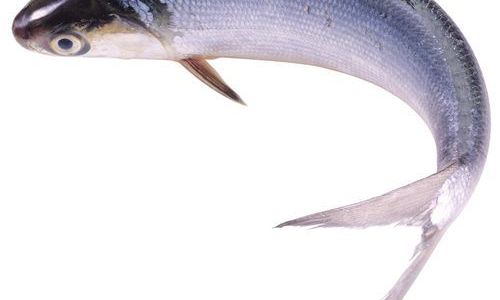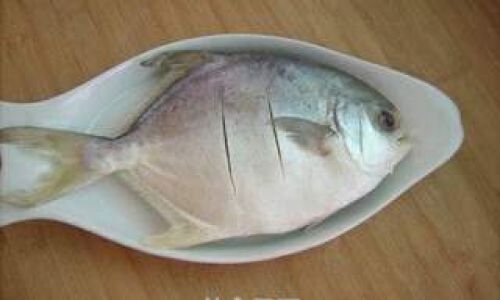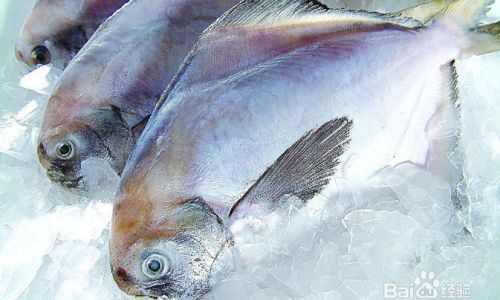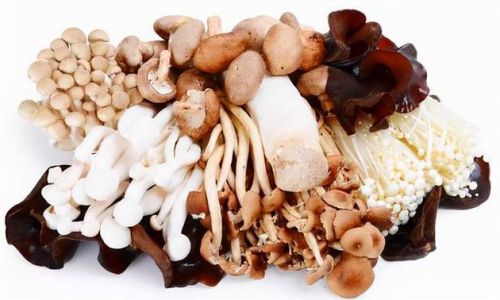Introduction
Fish, a cornerstone of global diets, is renowned for its nutritional richness and culinary versatility. However, its high moisture content and delicate flesh make it highly perishable, posing challenges for storage and distribution. Without proper preservation, fresh fish can spoil within hours, leading to waste and economic loss. This article explores the science and techniques behind preserving fresh fish, ensuring its quality, safety, and availability beyond harvest. From traditional practices to modern innovations, each method offers unique advantages tailored to specific needs, from short-term storage to long-term shelf-life extension.
Refrigeration: The First Line of Defense
Refrigeration is the simplest and most immediate method to delay spoilage. By lowering temperatures to between 0°C and 4°C (32°F–39°F), bacterial growth and enzymatic activity slow down significantly. For freshly caught fish, prompt refrigeration is critical. Fish should be cleaned, gutted, and stored in airtight containers or wrapped in moisture-proof paper to prevent dehydration and cross-contamination.

Key Considerations:
- Temperature Control: Fluctuations above 4°C accelerate spoilage. Use a thermometer to monitor refrigerator performance.
- Shelf Life: Refrigerated fish typically lasts 1–2 days. Fatty species like salmon or mackerel deteriorate faster than lean varieties like cod.
- Ice Integration: Layering fish with crushed ice in coolers or fish boxes maintains colder temperatures during transport, extending freshness by 3–5 days.
Freezing: Suspending Time
Freezing halts microbial growth and enzymatic reactions, preserving fish for months or even years. Success depends on rapid freezing and proper packaging to minimize ice crystal formation, which damages cell structures and affects texture.
Techniques for Optimal Freezing:
- Glazing: Dip fish in cold water before freezing to form a protective ice layer. Repeat after partial freezing to create a thicker glaze.
- Vacuum Sealing: Remove air to prevent freezer burn and oxidation. Use freezer-safe bags or containers.
- Blanching: Briefly cooking fish in boiling water or steam before freezing helps retain color and texture, particularly for shellfish.
Thawing Practices:
- Refrigerator Thawing: Slow and safe, preserving quality.
- Cold Water Bath: Submerge sealed fish in cold water, changing every 30 minutes.
- Avoid Microwave Thawing: Uneven heating can compromise texture.
Shelf Life:
- Lean fish (cod, haddock): 6–8 months.
- Fatty fish (salmon, tuna): 2–3 months.
Salting: Ancient Preservation Through Osmosis
Salting draws moisture from fish via osmosis, creating an inhospitable environment for bacteria. Two primary methods exist: dry salting and brining.
Dry Salting:
- Coat fish thoroughly with coarse salt (10–15% of fish weight).
- Layer fish in a container, alternating with salt.
- Cure for 12–48 hours, depending on thickness.
- Rinse and air-dry to form a pellicle (sticky surface) before smoking or storing.
Brining:
- Dissolve salt in water (20–30% salinity).
- Submerge fish for 6–24 hours.
- Dry and store or proceed to smoking.
Applications:
- Gravlax: Nordic-style cured salmon with dill and sugar.
- Bacalhau: Salted cod, a Portuguese staple, requires desalting before cooking.
Limitations:
- High sodium content.
- Over-salting risks excessive moisture loss and toughness.
Smoking: Flavor and Preservation in Smoke
Smoking combines drying, heat, and antimicrobial compounds from wood smoke. It imparts distinctive flavors while extending shelf life.
Types of Smoking:
- Cold Smoking: Below 30°C (86°F) for 12–48 hours. Preserves without cooking; requires prior curing.
- Hot Smoking: 60–90°C (140–194°F) for 1–12 hours. Cooks and preserves; results in moist, flavorful fish.
Wood Choices:
- Alder, hickory, and fruitwoods (apple, cherry) impart mild flavors.
- Mesquite and oak suit stronger-flavored fish like mackerel.
Safety:
- Cold-smoked fish must be refrigerated and consumed within days.
- Hot-smoked fish can last 1–2 weeks refrigerated.
Canning: Sterility Through Heat
Canning involves sealing fish in airtight containers and applying heat to destroy microorganisms. It requires precision to prevent botulism, a lethal toxin produced by Clostridium botulinum.

Process:
- Clean and cut fish into portions.
- Pack in jars or cans, leaving headspace.
- Add brine, oil, or sauce.
- Pressure-cook at 116–121°C (240–250°F) for 70–100 minutes (adjust for fish type and jar size).
- Cool and store.
Safety Protocols:
- Use a pressure canner for low-acid foods.
- Follow USDA guidelines strictly.
- Discard bulging or leaking cans.
Shelf Life:
- Properly canned fish remains safe indefinitely, though quality declines after 2–5 years.
Drying/Dehydration: Removing Moisture
Drying reduces water activity (aw) to levels unsuitable for microbial growth. Methods vary by climate and technology.
Traditional Drying:
- Sun Drying: Lay fish on racks in arid, windy areas. Protect from insects and dust.
- Air Drying: Hang fish in cool, well-ventilated spaces.
Modern Techniques:
- Oven Drying: Low heat (50–70°C/122–158°F) for 4–12 hours.
- Food Dehydrators: Controlled temperature and airflow yield consistent results.
Products:
- Stockfish: Unsalted, air-dried cod used in Nordic and Mediterranean cuisines.
- Fish Jerky: Marinated, sliced fish dried to chewy consistency.
Challenges:
- Humidity above 60% risks mold growth.
- Over-drying causes brittleness; under-drying permits spoilage.
Ice Preservation: The Cool Chain
Ice remains indispensable for preserving fish during transport and in markets. Flaked ice, with its high surface area, cools fish faster than block ice.
Best Practices:
- Use a 1:1 ice-to-fish ratio by weight.
- Layer fish and ice in insulated containers.
- Drain meltwater regularly to prevent bacterial growth.
Advanced Systems:
- Slurry Ice: Mixtures of ice and saltwater (−2°C to −1°C) provide rapid, uniform cooling.
- Carbon Dioxide Snow: Sublimating dry ice for ultra-low temperatures.
Vacuum Sealing: Eliminating Oxygen
Vacuum sealing removes air, inhibiting aerobic bacteria and oxidation. It synergizes with freezing or refrigeration.
Equipment:
- Chamber vacuum sealers handle liquids better than external models.
- Use BPA-free, food-grade bags.
Benefits:
- Prevents freezer burn.
- Extends refrigerated shelf life by 3–5 days.
Fermentation: Harnessing Microbes
Fermentation uses beneficial bacteria and enzymes to preserve fish, often enhancing flavor.

Examples:
- Fish Sauce (Nam Pla): Fermented anchovies and salt, a cornerstone of Southeast Asian cuisine.
- Rakfisk: Norwegian fermented trout or char, aged 3–12 months.
Process:
- Layer fish with salt (15–25% by weight).
- Ferment at 15–20°C (59–68°F) for weeks to months.
- Monitor pH and texture.
Chemical Preservatives: Controlled Additives
Food-grade chemicals like sodium nitrite, sodium benzoate, and citric acid inhibit spoilage organisms.
Applications:
- Sodium Nitrite: Prevents botulism in cured meats and fish.
- Ascorbic Acid: Acts as an antioxidant in smoked fish.
Regulations:
- Adhere to FDA/EFSA guidelines to avoid toxicity.
Modified Atmosphere Packaging (MAP): Gas Engineering
MAP replaces air with gases like CO₂ (inhibits bacteria) and N₂ (prevents oxidation). Common in commercial fish packaging.
Benefits:
- Extends refrigerated shelf life by 2–3 times.
- Maintains color and texture.
Limitations:
- Requires specialized equipment.
- Not a standalone method; often paired with refrigeration.
Combination Methods: Synergy for Longevity
Traditional methods often combine techniques. For example:
- Kippers: Smoked and salted herring.
- Dried and Salted Cod: Double-processed for maritime trade.
Safety and Quality Assurance
Signs of Spoilage:
- Off Odors: Ammonia, sour, or fishy scents.
- Sliminess: Bacterial growth on surface.
- Discoloration: Dull eyes, graying gills, or brown flesh.
Cross-Contamination Prevention:
- Use separate cutting boards for raw fish.
- Sanitize surfaces with bleach solution (1 tbsp/gallon water).
Conclusion
Preserving fresh fish is both an art and a science, blending time-honored traditions with cutting-edge technology. Each method—whether the simplicity of refrigeration or the complexity of canning—serves a unique purpose, from daily meal prep to global trade. By understanding the principles behind these techniques, consumers and fisheries alike can reduce waste, ensure food safety, and savor the ocean’s bounty year-round. As climate change and overfishing strain resources, efficient preservation becomes not just a culinary practice but a pillar of global food security.





0 comments